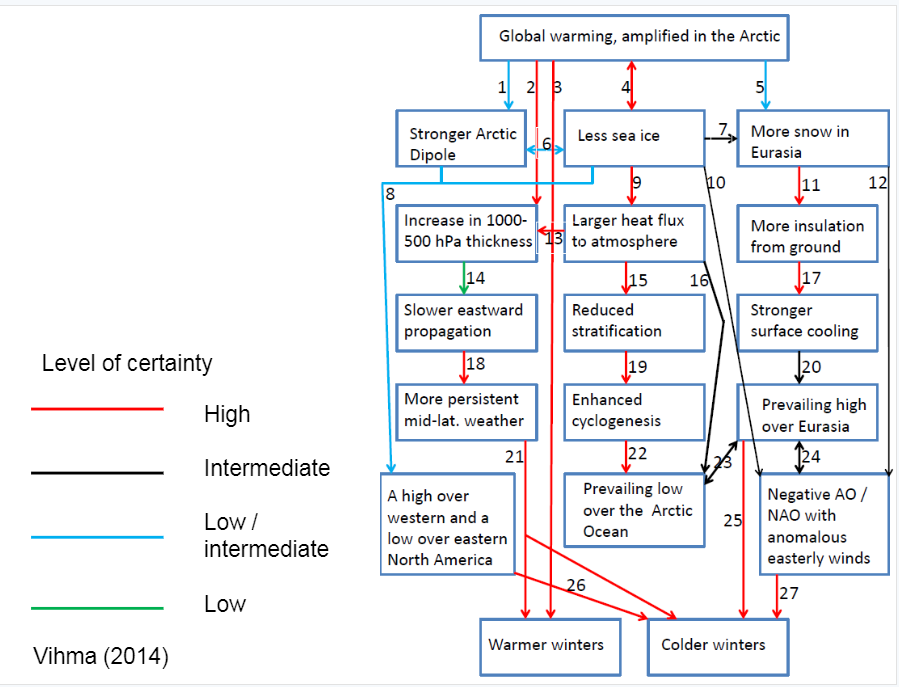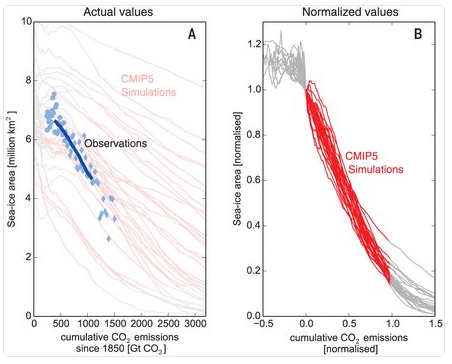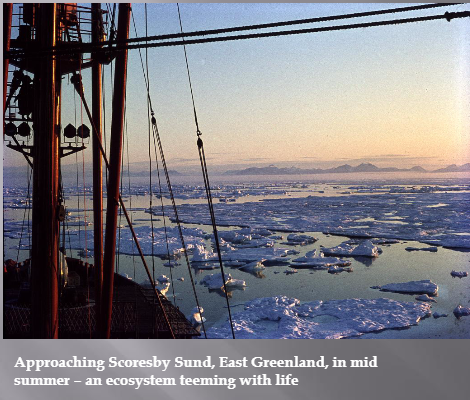The Warm Arctic workshop was held at DMI on the 5th and 6th December with several invited guest speakers from outside the ice2ice group. Svend Funder and Kurt Kjær from the Centre for Geogenetics at the Natural History Museum of Denmark in Copenhagen gave a good introductory overview of the current state of the art in terms of paleoproxies for Arctic sea ice extent and ice sheet extent in Greenland respectively. This was excellent framing for the remainder of the workshop.

Timo Vihma from the Finnish Meteorological Institute contributed an interesting talk on connections between the Arctic and the mid-latitudes including a very comprehensive diagram showing important processes and linkages, while on the second day, external speakers Wieslaw Maslowski and Dirk Notz (remotely) gave a nice overview of the state of the sea ice modelling from their respective groups, leading to an intense discussion on whether the ocean or the atmosphere was the dominant driver of change in the Arctic. Dirk Notz work shows nicely that sea ice decline follows emissions pretty directly. Internal speakers from DMI, included Rasmus Tonboe who gave a good overview of current sea ice data available from EUMETSAT and Torben Schmidt handled the modelling side with a look at multidecadal variability in the Arctic ocean.

Various ice2ice members also gave talks on different aspects of the project including a presentation by Shuting Yang on the Arctic sea ice loss and Northern hemisphere winters. There was a very comprehensive discussion by Peter Langen on Greenland ice sheet surface mass balance, some early work from Martin Stendel on the Arctic seesaw when there is little or no sea ice and PI Jens Hesselbjerg Christensen on the state of sea ice in a 1.5C world (spoiler: there won’t be very much). Rasmus Anker Pedersen also showed some of his work on the atmospheric response to a sea ice free Arctic.

As the aim of the workshop was to produce a review paper on the subject, there were two wide ranging discussion sessions where a very wide range of related topics were explored, including the aforementioned question of the relative importance of ocean and atmosphere and how the processes and feedbacks between the two might look. There was also much discussion on ways to improve sea ice representations in models and the importance of both including more comprehensive processes and improved model resolution in both ocean and atmosphere models. Finally, the workshop participants structured these issue into a format to create both a publication and potentially a conference session in the future, watch this space!
The workshop was organized by Christian Rodehacke, Peter Langen, Shuting Yang and Jens Hesselbjerg and was held at DMI.